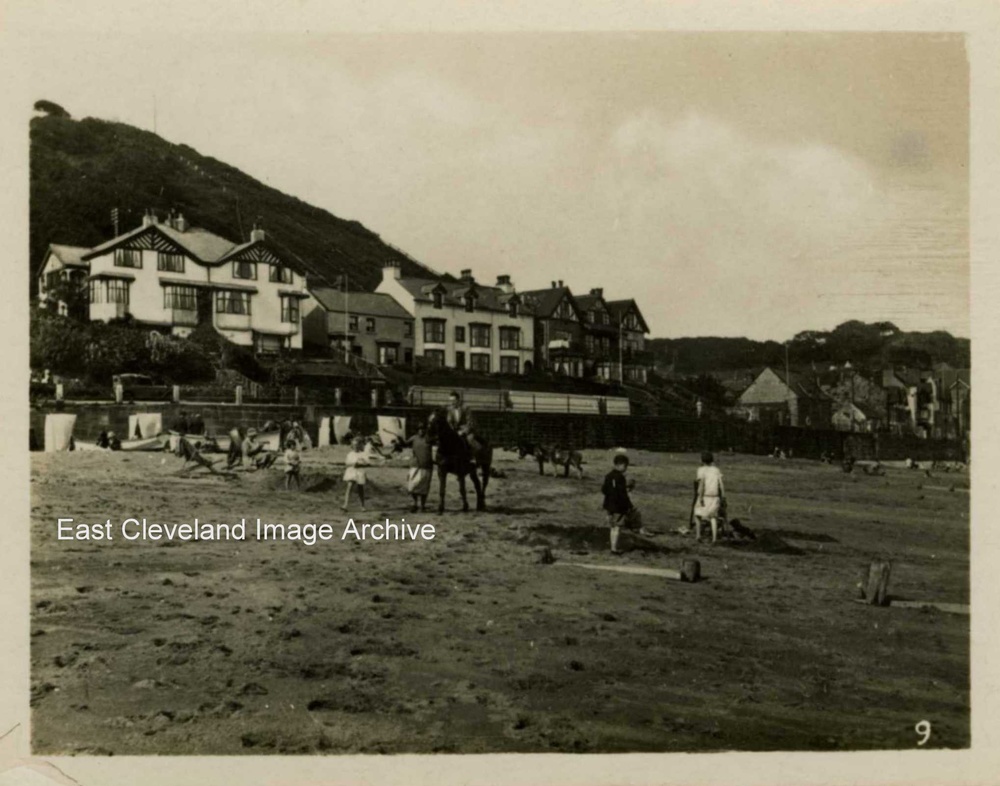
Donkey rides obviously featured as part of the regular Sandsend beach scene. Today they are a fast vanishing past-time for beach users. Perhaps the horseman is seeking direction?
Image courtesy of John G. Hannah.
|
|
||
 Donkey rides obviously featured as part of the regular Sandsend beach scene. Today they are a fast vanishing past-time for beach users. Perhaps the horseman is seeking direction? Image courtesy of John G. Hannah. 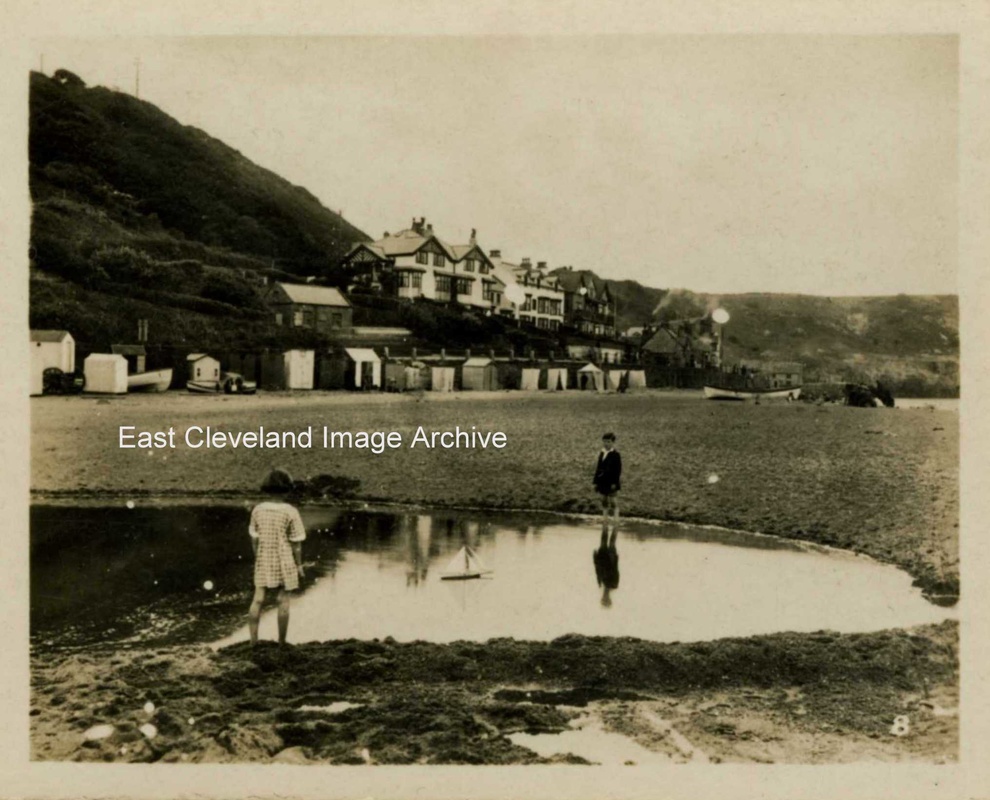 Again a very quiet beach scene, with bathing tents rather than the normal huts. Possibly early 20th century, biut if anybody can advise we will amend. Image courtesy of John G. Hannah. 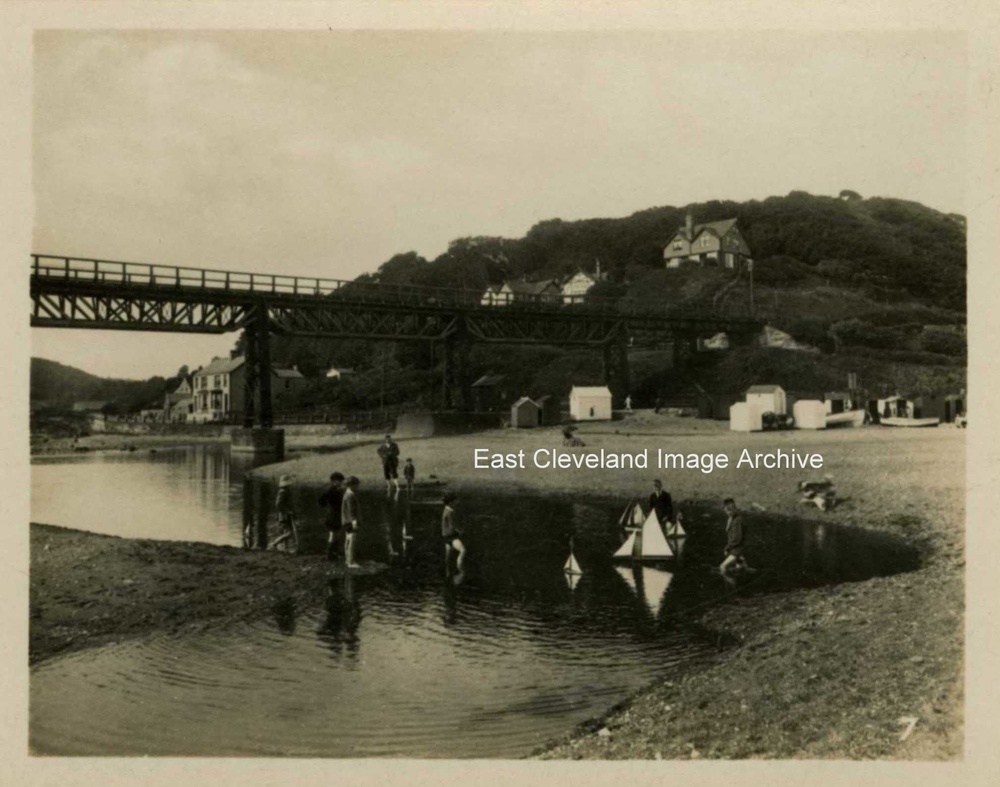 With at least one bathing hut in this view we have an indication that it probably dates from early 20th century. A calm day even the reflections of the model sailing boats are clear seen. Image courtesy of John G. Hannah. 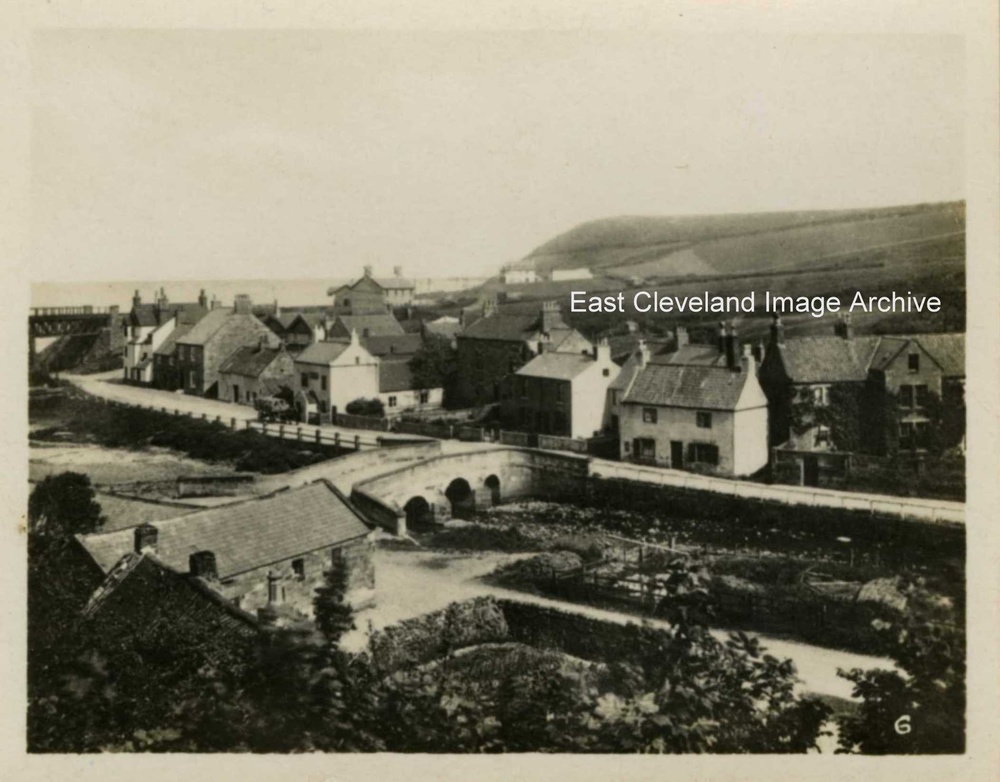 The horse and cart in the middle of this view give a telling indication of the quietness of the scene presented. No vehicles rushing to get over the bridge as can be seen today. Image courtesy of John G. Hannah. 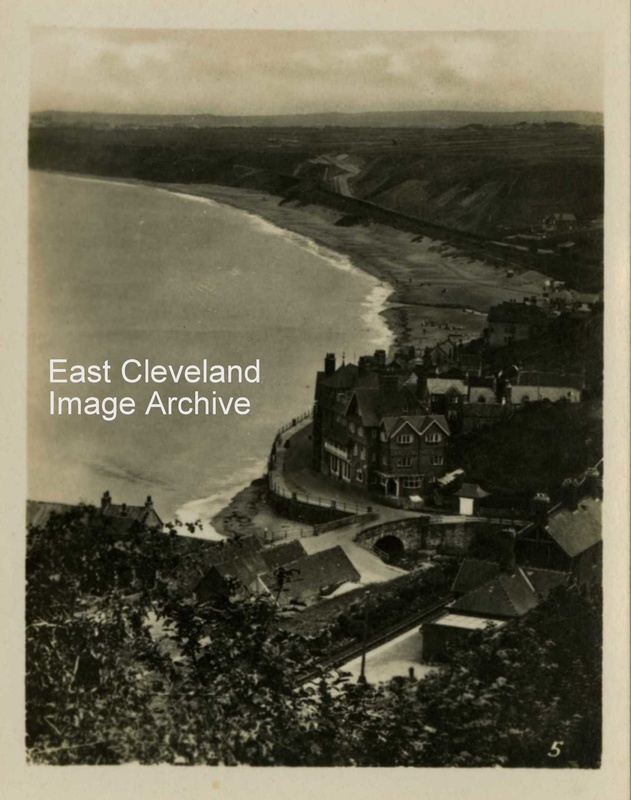 The view from above Sandsend railway station shows clearly the Sandsend Hotel in the centre; whilst beyond can be seen the road and rail track proceeding towards Whitby. Image courtesy of John G. Hannah.  A view showing the end of Dunsley Lane, viewing Sandsend front and Kettleness point. The block of land encompassing the railway engine shed and adjacent parking (has nowadays been replaced with stone built houses), is well seperated from the road to Whitby by substantial wooden board fencing. Image courtesy of John G. Hannah. 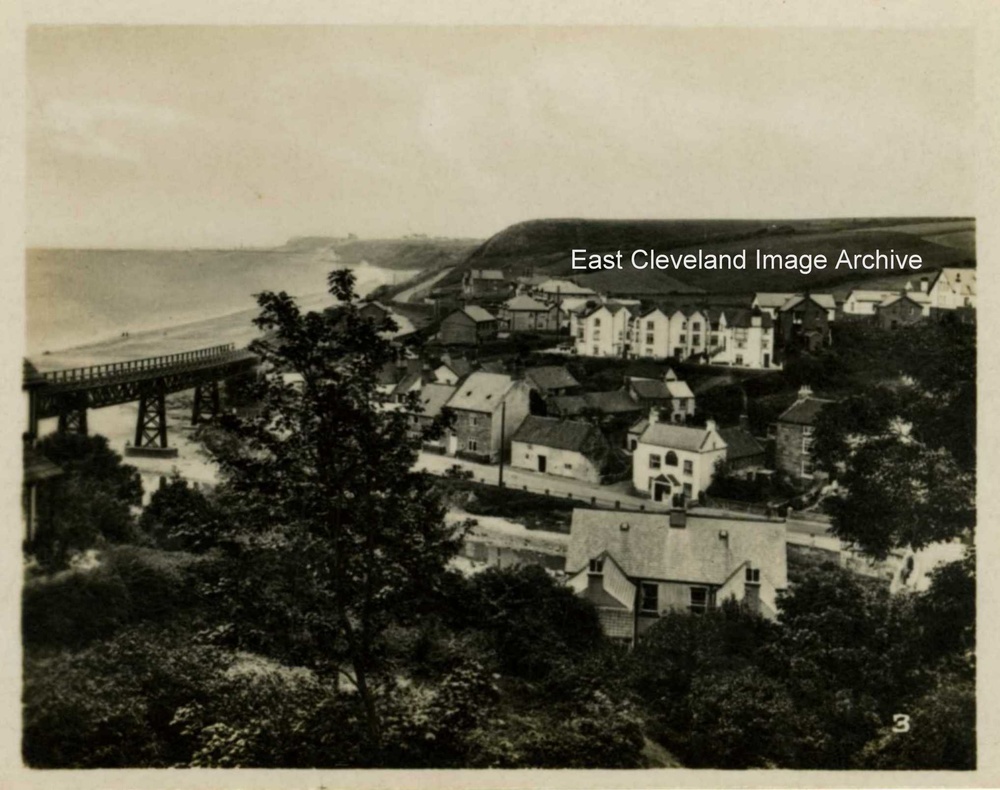 This view is of East Row with the white painted Hart Inn in the centre of the image. St Mary’s Church and Whitby Abbey can be seen in the far background. Image courtesy of John G. Hannah. 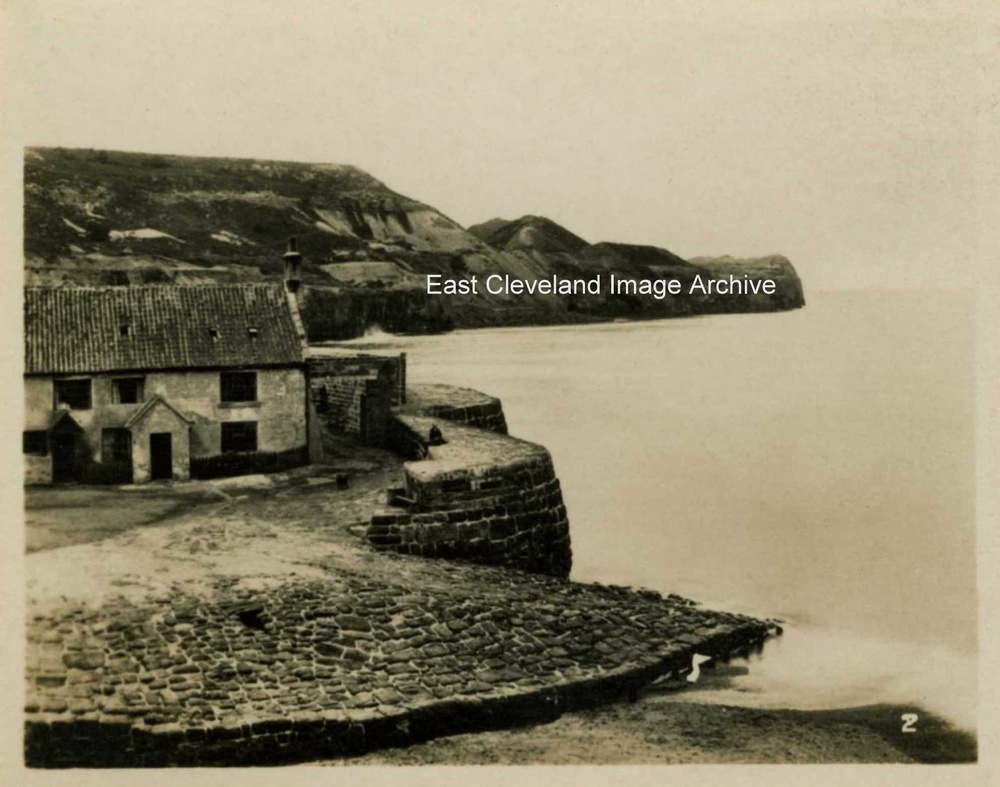 The point is in the background; of greater interest is the range of buildings on the left. This is the Sandsend Alum house, long since demolished to be replaced by a car park and range of garages huddled under the former railway banking. Image courtesy of John G. Hannah. 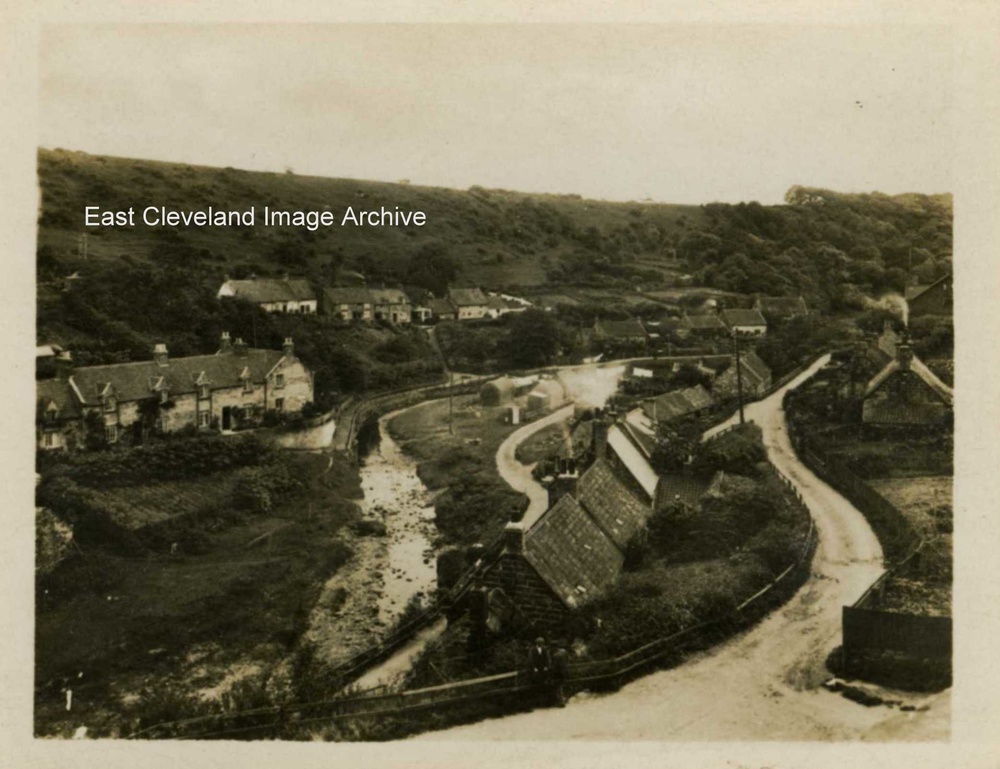 This is the first in a series of twelve postcards of Sandsend from early in the 20th century. This view shows an area much changed today, some of the buildings in the centre have long gone to be replaced with a gravelled parking area. Image courtesy of John G. Hannah. 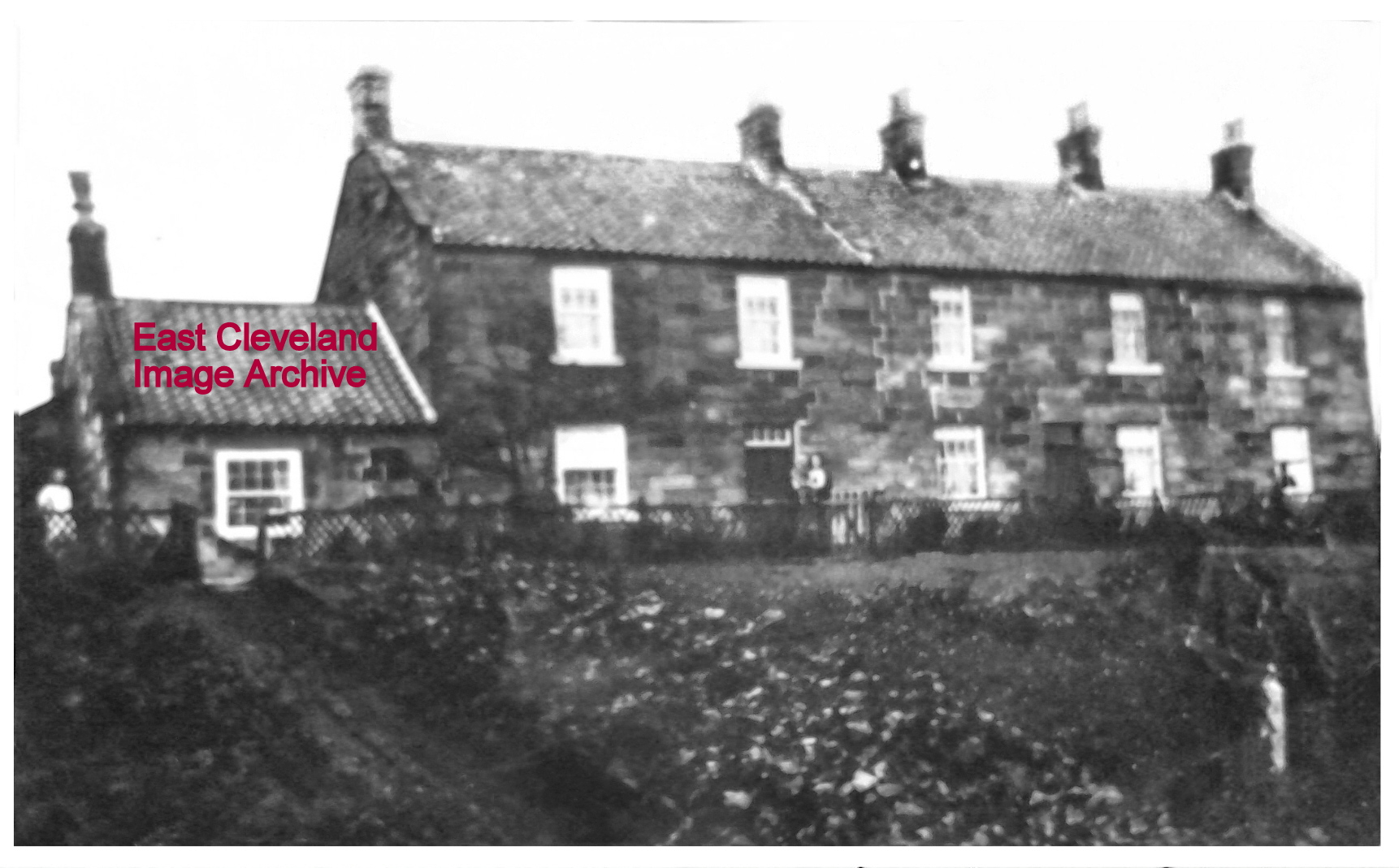 Mrs Wilkinson had written on this photograph, that these houses had been built for the alum managers, now tell me where they were? A hint – this may be the location of Rawcliffe (Rockcliffe) Cottages, situated above Rockcliffe farm, near Street Houses and demolished pre Second World War. Could anybody assist in identifying the residents of the cottages? Following researches the Archive has discovered that in 1939; Elizabeth Nicholson who was born in 1857 was living at Gallihowe Farm and George Nicholson was living at No. 1 Street Houses. Eric Johnson advised: “In the late 1940’s early 1950’s, Betty Graves lived with her family in the left hand cottage. The small out building was the wash house; the toilet was down the field and had a well for water. Myra and Eddie Cross lived next door. The word “Howe” in Gallihowe is an ancient word for a “Grave”. And in the field behind the cottages was discovered the Anglo Saxon Cemetery containing the grave of the Anglo Saxon Princess.” David Camidge assisted with: “I have a copy of the same picture. My grandfather was born at Gallihow. His parents and paternal grandparents are shown as living there, along with his elder brother, in the 1911 census records. I am not sure when the family moved from Gallihow, but I believe that by the time the photograph was taken my grandfather was working for Mr J Gill at Ellerby. My grandfather once said that the building stone from Gallihow was re-used in the construction of a new house somewhere in the North Yorks Moors area. I have no further details, and I am not sure if my grandfather knew any more about this matter.” David also added: “I also have a copy of a photograph, possibly dating from about 1938, showing ‘the Nicholson family from Gallihowe’. It does not identify where it was taken, but it appears to have been related to my great-great-grandmother’s 80th birthday. It shows her with her seven children, George (my great-grandfather), Jack, William, Maude (aka Shand?), Esther (Cossey), Sally (Dawe) and Elizabeth (Garbutt).” George Don Nicholson added: “George Nicholson (b. August 1932) now living in Devon; I remember visiting Gallihowe in late thirties and meeting my Great Grandma Elizabeth then bedridden at 80 years (nee Lyth daughter of Richard a farmer of 60 acres at Egton). Great Aunt Ester (my Grandad John’s maiden sister) was in charge at the time and made us very welcome with a feast to behold including a memorable Yorkshire cheese curd tart. In the summer time a cow or cows were kept in the Warren (half way down the cliff) a male member of the family lived down with the cows and carried milk up to Gallihowe where it was churned into butter. In about 1940 there was a search-light battery on the cliff, the drinking water was carried in two buckets, they were supported by a wooden yolk 2-300 yards to the farm from an enclosed surface spring. I can trace the Nicholsons back to the 18th century when there are just too many George Nicholsons living in Whitby, all involved with the sea. I have this romantic idea that one of them either sailed with Cook on his epic voyages or at least was involved in the construction of his ship. I visited the area ten years ago and spoke to a Mrs Garbutt at street Houses, she gave me the name of the builder who bought the stone from Gallihowe but sadly I can’t remember.” Image courtesy of Mrs E. Wilkinson (via Keith Bowers), thanks to Eric Johnson, David Camidge, George Don Nicholson, Susan Camidge and Barbara Whittle for the updates. |
||
Recent Comments